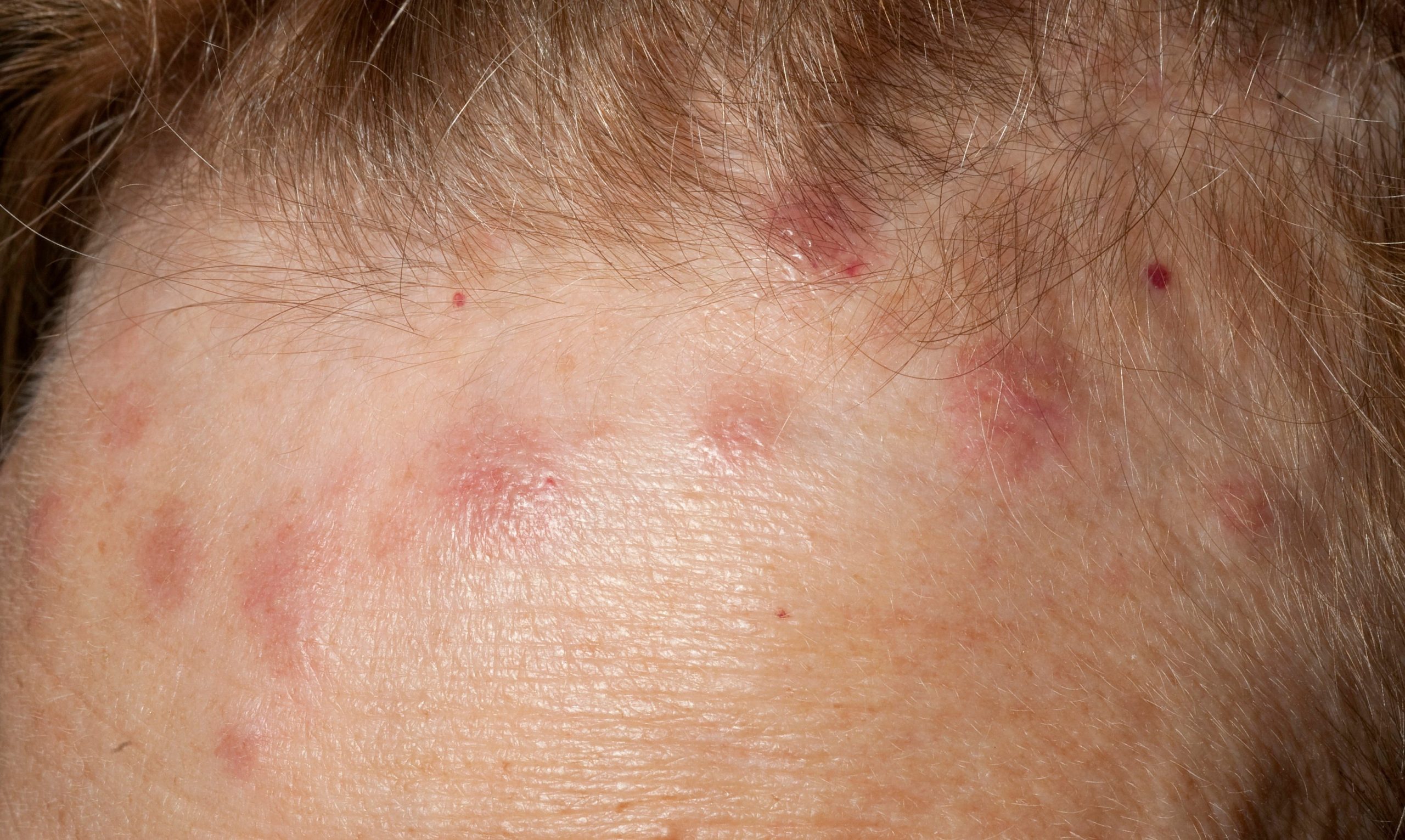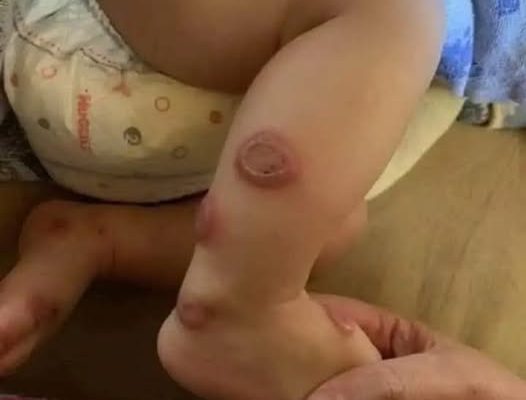
Sweet Syndrome, also known as acute febrile neutrophilic dermatosis, is a rare inflammatory skin disorder with systemic manifestations. Although uncommon, it is critical for primary care physicians to recognize its clinical signs and consider it during differential diagnosis—especially when symptoms rapidly follow medication changes.
This article outlines a documented clinical case and offers a comprehensive review of Sweet Syndrome, including its presentation, diagnostic criteria, treatment, and clinical significance, particularly in relation to medication-induced reactions.
Clinical Case Summary
A 55-year-old female patient with a medical history of hypertension and chronic obstructive pulmonary disease (COPD) presented with erythematous, painful facial and neck lesions accompanied by low-grade fever. She had no known allergies and reported smoking approximately 10 cigarettes daily.
Her regular medication regimen included:
Enalapril (6 years)
Inhaled formoterol (2 years)
Due to a deterioration in pulmonary function, her pulmonologist replaced formoterol with a combination of indacaterol and glycopyrronium in capsule inhaler form.
On the second day of the new therapy, the patient developed painful, reddish skin lesions on her cheeks and neck, prompting a visit to her primary care clinic. She denied recent upper respiratory infection symptoms, had used appropriate sun protection, and made no changes to her diet or cosmetic routine.
Referral and Diagnostic Workup
Given the sudden onset and severity of symptoms, the patient was referred urgently to the Dermatology Department. The specialist recommended discontinuation of the new inhaled medication, conducted a skin biopsy, and ordered laboratory testing, including:
Complete blood count (CBC)
Autoimmune panel (e.g., antinuclear antibodies)
Lupus anticoagulant
Infectious serology
Initial labs showed:
Leukocytosis with neutrophilia
Negative autoimmune serology
No signs of infection
Corticosteroid therapy was initiated. Within 24 to 48 hours, the lesions improved significantly and pain diminished.
Final Diagnosis: Sweet Syndrome
Histopathological analysis of the skin biopsy confirmed Sweet Syndrome. The diagnosis was based on both clinical presentation and tissue findings, characterized by dense neutrophilic infiltrates in the dermis without vasculitis.
This case highlights the rare occurrence of Sweet Syndrome following inhaled bronchodilator therapy—specifically, a combination of indacaterol and glycopyrronium, which has not previously been reported in medical literature as a trigger for this condition.

What Is Sweet Syndrome?
Sweet Syndrome is classified among neutrophilic dermatoses. It typically presents with:
Painful erythematous plaques or nodules
Sudden onset
Fever
Leukocytosis
The lesions are often bilaterally distributed and asymmetrical, typically affecting the face, neck, upper trunk, and extremities.
Common Symptoms:
Low-grade to moderate fever
Painful skin lesions (papules or plaques)
Fatigue or malaise
Joint pain or ocular symptoms (in some cases)
Diagnostic Criteria for Sweet Syndrome
According to Su and Liu (1986) and updated clinical guidelines, the diagnosis is made using a combination of major and minor criteria:
Major Criteria:
Abrupt onset of painful erythematous plaques or nodules
Histopathology showing dense neutrophilic infiltrate without vasculitis
Minor Criteria (at least two required):
Fever >38°C
Association with malignancy, inflammatory disease, or drug exposure
Leukocytosis
Excellent response to systemic corticosteroids
Elevated erythrocyte sedimentation rate (ESR)
(Sources: Cohen PR. Sweet’s syndrome – a comprehensive review of an acute febrile neutrophilic dermatosis. Am J Clin Dermatol. 2007)
Etiology and Triggers
The exact cause of Sweet Syndrome is not fully understood, but several triggers have been identified, including:
Upper respiratory tract infections
Autoimmune conditions (e.g., lupus, rheumatoid arthritis)
Hematologic malignancies (e.g., leukemia)
Solid tumors
Medications
Drug-Induced Sweet Syndrome
Several classes of drugs have been linked to Sweet Syndrome, including:
Antibiotics
Oral contraceptives
Colony-stimulating factors
Antiepileptics
Antihypertensives
Though rarely associated, this case introduces a potential link between inhaled long-acting bronchodilators and Sweet Syndrome, emphasizing the need for ongoing pharmacovigilance and clinician awareness.
Treatment and Prognosis
The first-line treatment for Sweet Syndrome is systemic corticosteroids (e.g., prednisone), which often result in a rapid resolution of symptoms within a few days.
In refractory or recurrent cases, alternative therapies may include:
Colchicine
Dapsone
Potassium iodide
Immunosuppressive agents (e.g., cyclosporine, azathioprine)
Early diagnosis and treatment significantly improve outcomes and help prevent systemic involvement.
Differential Diagnosis
Due to its varied presentation, Sweet Syndrome must be distinguished from:
Urticaria
Contact dermatitis
Lupus erythematosus
Toxicodermas
Infectious exanthems
Skin biopsy and blood tests are essential in ruling out these conditions and confirming the diagnosis.
Clinical Significance
Sweet Syndrome, though rare, is important because it may serve as a marker for underlying systemic disease, particularly:
Hematologic malignancies (e.g., myelodysplastic syndromes)
Autoimmune disorders
Infectious or drug-induced reactions
Therefore, once diagnosed, patients should undergo a thorough systemic evaluation, including imaging and laboratory tests, to rule out associated conditions.
Implications for Primary Care
Primary care physicians play a vital role in:
Recognizing early signs of neutrophilic dermatoses
Initiating appropriate referrals to dermatology or internal medicine
Suspecting drug-induced reactions, even with uncommon medications
Prompt diagnosis allows for timely treatment and prevention of systemic complications.
Conclusion
Sweet Syndrome remains a diagnostic challenge due to its rarity and broad differential. However, awareness of its presentation—especially in the context of recent medication changes—can lead to rapid diagnosis and effective treatment.
This clinical case illustrates the importance of considering Sweet Syndrome in patients presenting with acute skin lesions and systemic symptoms, particularly when other common conditions have been excluded. It also highlights the need for primary care physicians to remain vigilant about uncommon side effects of both new and established medications.

